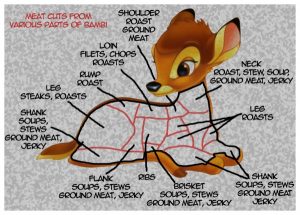I grew up with hot peppers, love them, only thing is I can’t tolerate them. I remember going to these massive Italian weddings when I was younger and my dad used to bring his own hot dried peppers from home, stuff them in his pocket and when the pasta came out so did the heat. The heat on these peppers was nothing like the one an Australian man ate at a hot eating pepper competition.
James Gorman of the The Sydney Morning Herald reports:
If you eat a really hot chilli pepper, you expect pain. A lot of pain.
In addition to the feeling that you have just put a live coal in your mouth, you may weep, vomit and wonder where in your life you took a wrong turn.
It seemed like a good idea at the time.
You don’t expect a headache so intense and immediate that it sends you to the emergency room. But that’s what happened to a 34-year-old man who turned up at a New York hospital with what clinicians call a thunderclap headache.
His problems began when he ate a whole Carolina Reaper — the hottest chilli pepper in the world, according to Guinness World Records — while participating in hot-pepper-eating competition.
He immediately started experiencing dry heaves — not unknown in the hot-pepper-eating world. But then a pain in his neck and head came on like … a thunderclap.
Advertisement
It passed, but over the next few days he experienced more thunderclap headaches — that is the clinical term — so he sought medical attention.
Scans of his head and neck showed the kind of constriction in some arteries that can cause intense headaches, doctors reported in BMJ Case Reports. The scientific term for this temporary narrowing of arteries is reversible cerebral vasoconstriction syndrome.
Dr Kulothungan Gunasekaran, one of the report’s authors, now at the Henry Ford Hospital in Detroit, said that for some reason the man must have been particularly sensitive to capsaicin, the heat-producing ingredient in peppers. The Carolina Reaper is a popular pepper, and many people eat them and experience nothing worse than the desire to cut out their own tongues.
“I was discussing the case with a nurse who had eaten three Carolina Reapers,” Dr Gunasekaran said.
The Reaper has been measured at more than 2 million Scoville heat units, the accepted scale for how hot peppers are. Measurements vary, but a really hot habanero might come in at 500,000 Scoville units.
The patient was fine, with no lingering damage, but thunderclap headaches are not to be dismissed. For one thing, there is the pain, which seems to surpass even the normal effect of the peppers.
Dr Lawrence C. Newman, a neurologist and director of the headache division at NYU Langone Health, said: “On a 1 to 10 scale, it’s off the charts.” And it can indicate the kind of stroke that results from bleeding in the brain.
It happens instantaneously. If that kind of headache hits you, it makes sense to seek medical attention “whether you’ve bitten into a pepper or not,” Dr Newman said.
The new study does suggest that capsaicin, being investigated for its role in alleviating pain and lowering blood pressure, can have unexpected effects on certain people.
Cayenne pepper pills and a capsaicin patch, sold in China and Turkey, have been blamed in medical reports for two non-fatal heart attacks in young men, the result of spasms in arteries.
But “we are not advising anything against the Carolina Reaper,” Dr Gunasekaran said.
The Reaper was bred to reach record levels of heat. Reached by telephone at the PuckerButt Pepper Company in Fort Mill, South Carolina, the Reaper’s creator, Ed Currie, offered mixed advice on pepper consumption.
On the one hand, he said, “people who eat whole Reapers are just being stupid”. But “Smokin’ Ed”, as he calls himself, also gave the impression that was not such a bad thing. “We eat them all the time,” he said, with no ill consequences beyond pain.
Mr Currie indulges in other competitions of suffering. For instance, he said, he had recently taken the Death Nut Challenge, which involves eating insanely hot peanuts. He has a partnership with a company that produces them.
“I knew beforehand I shouldn’t do it,” Mr Currie said. “I was in pain for two hours.”
For the average person interested in spice, not suffering, he advised using small amounts of any really hot pepper in food preparation, as they were intended.
So if you happen to go beyond your limits — having, say, entered a hot-pepper-eating competition?
“Citric acid seems to work the best to alleviate the pain,” he said. “Don’t chug milk because you’ll just throw it up.”
 As of April 9, 2018, 17 people infected with the outbreak strain of E. coli O157:H7 have been reported from 7 states. A list of the states and the number of cases in each can be found on the Case Count Map page. Illnesses started on dates ranging from March 22, 2018 to March 31, 2018. Ill people range in age from 12 to 84 years, with a median age of 41. Among ill people, 65% are female. Six ill people have been hospitalized, including one person who developed hemolytic uremic syndrome, a type of kidney failure. No deaths have been reported.
As of April 9, 2018, 17 people infected with the outbreak strain of E. coli O157:H7 have been reported from 7 states. A list of the states and the number of cases in each can be found on the Case Count Map page. Illnesses started on dates ranging from March 22, 2018 to March 31, 2018. Ill people range in age from 12 to 84 years, with a median age of 41. Among ill people, 65% are female. Six ill people have been hospitalized, including one person who developed hemolytic uremic syndrome, a type of kidney failure. No deaths have been reported.








